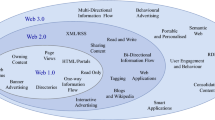Abstract
Deploying the Internet of Things (IoT) in the transfer of enormous medical data often promotes challenges with the security, confidentiality, and privacy of the user’s sensitive data. In addition, the access control for prohibiting unauthorized access has been facing challenges with single-point-of-failure, collusion, and other security issues. To address these challenges associated with IoT access control, this research proposes a Blockchain-enabled IoT access control for sharing Electronic health records (EHR). The proposed authentic access control scheme transfers the data to the authenticated user without discrepancies. The proposed technique utilizes the hyperledger composer fabric blockchain that improves the transparency and traceability of the network, and the intelligent contract keeps track of the information, which reduces the possibility of unauthorized access. The proposed access control scheme validates the request effectively and transmits the data efficiently. The effectiveness of the proposed access control scheme is evaluated by analyzing the blocks in terms of metrics such as responsiveness of 185.47 secs, 95% Genuine User Detection (GUD), 96.50% Privacy, and 3.50% Information loss, for 100 blocks and proposed access control scheme works more efficiently in transmitting the data.
Access this article
We’re sorry, something doesn't seem to be working properly.
Please try refreshing the page. If that doesn't work, please contact support so we can address the problem.








Similar content being viewed by others
Data availability
Not applicable.
References
Sun S, Du R, Chen S, Li W (2021) Blockchain-based IoT access control system: towards security, lightweight, and cross-domain. IEEE Access 9:36868–36878
Lin J, Wei Yu, Zhang N, Yang X, Zhang H, Zhao W (2017) A survey on internet of things: architecture, enabling technologies, security, and privacy, and applications. IEEE Internet Things J 4(5):1125–1142
Liu H, Han D, Li D (2020) Fabric-IoT: a blockchain-based access control system in IoT. IEEE Access 8:18207–18218
Caruccio L, Desiato D, Polese G, Tortora G (2020) GDPR compliant information confidentiality preservation in big data processing. IEEE Access 8:205034–205050
Caruccio L, Desiato D, Polese G, Tortora G, Zannone N (2022) A decision-support framework for data anonymization with application to machine learning processes. Inf Sci 613:1–32
Rouhani S, Deters R (2019) Blockchain-based access control systems: state of the art and challenges. In: IEEE/WIC/ACM International Conference on Web Intelligence. pp 423–428
Rouhani S, Belchior R, Cruz RS, Deters R (2021) Distributed attribute-based access control system using permissioned blockchain. World Wide Web 24(5):1617–1644
Guo L, Yang X, Yau W-C (2021) TABE-DAC: efficient traceable attribute-based encryption scheme with dynamic access control based on blockchain. IEEE Access 9:8479–8490
Zheng W, Zheng Z, Chen X, Dai K, Li P, Chen R (2019) Nutbaas: a blockchain-as-a-service platform. Ieee Access 7:134422–134433
Oktian YE, Lee S-G (2021) BorderChain: blockchain-based access control framework for the internet of things endpoint. IEEE Access 9:3592–3615
Li Z, Hao J, Liu J, Wang H, Xian M (2021) An IoT-applicable access control model under double-layer blockchain. IEEE Trans Circuits Syst II Express Briefs 68(6):2102–2106
Nakamoto S, Bitcoin A (2008) A peer-to-peer electronic cash system. Bitcoin.–URL: https://bitcoin.org/bitcoin.Pdf 4
Shi J, Li R, Hou W (2020) A mechanism to resolve the unauthorized access vulnerability caused by permission delegation in blockchain-based access control. IEEE Access 8:156027–156042
Iftekhar A, Cui X, Tao Q, Zheng C (2021) Hyperledger fabric access control system for internet of things layer in blockchain-based applications. Entropy 23(8):1054
Chattaraj D, Bera B, Das AK, Rodrigues JJPC, Park Y (2022) Designing fine-grained access control for software-defined networks using private blockchain. IEEE Internet Things J 9(2):1542–1559
Li H, Pei L, Liao D, Chen S, Zhang M, Xu D (2020) FADB: a fine-grained access control scheme for VANET data based on blockchain. IEEE Access 8:85190–85203
Funding
Not applicable.
Author information
Authors and Affiliations
Corresponding author
Ethics declarations
Conflicts of interest
The authors declare that they have no conflict of interest.
Additional information
Publisher's Note
Springer Nature remains neutral with regard to jurisdictional claims in published maps and institutional affiliations.
Rights and permissions
Springer Nature or its licensor (e.g. a society or other partner) holds exclusive rights to this article under a publishing agreement with the author(s) or other rightsholder(s); author self-archiving of the accepted manuscript version of this article is solely governed by the terms of such publishing agreement and applicable law.
About this article
Cite this article
Ilyas, B., Kumar, A., Ali, S.M. et al. Blockchain-enabled IoT access control model for sharing electronic healthcare data. Multimed Tools Appl (2024). https://doi.org/10.1007/s11042-024-19232-6
Received:
Revised:
Accepted:
Published:
DOI: https://doi.org/10.1007/s11042-024-19232-6




